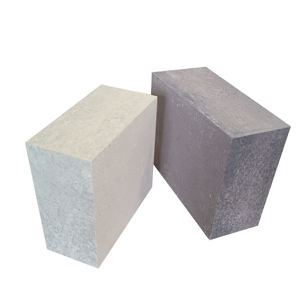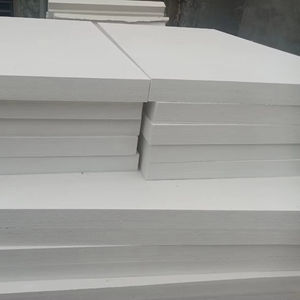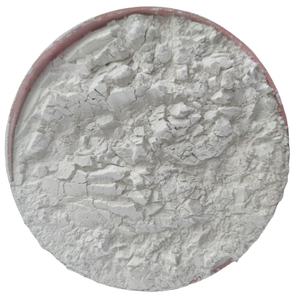Discover Premium Ceramic Products | Durability & Elegance United | Advanced Ceramics
1. Introduction
Imagine you’re trying to grow a flawless sapphire crystal the size of a bowling ball. Not for jewelry—though it would make one heck of a paperweight—but for use in LED substrates, missile domes, or luxury smartphone screens. You’d need temperatures hotter than your ex’s temper, a contamination-free environment, and a container that won’t melt, crack, or politely excuse itself from the furnace. Enter the unsung hero: the silicon carbide crucible.

While most of us associate ‘silicon carbide‘ with black ceramic dinner plates or that suspiciously durable baking dish from Staub, its real superpowers shine in high-stakes industrial niches. One such arena? Crystal growth. And no, we’re not talking about healing quartz clusters for your yoga studio.
2. The High-Stakes World of Crystal Growth
2.1. Why Crucibles Matter More Than You Think
In crystal growth—especially the Verneuil or Czochralski methods—the crucible isn’t just a pot; it’s a precision thermal chamber. Any impurity leaching from the container can ruin an entire batch of ultra-pure crystals. That’s why materials like quartz or alumina sometimes fall short. They soften, react, or introduce trace metals that turn your sapphire into… well, expensive sludge.
Enter the silicon carbide crucible. With a melting point north of 2,700°C, exceptional thermal conductivity, and chemical inertness, it’s basically the Iron Man suit of labware. It laughs in the face of thermal shock and scoffs at corrosive vapors.
2.2. Silicon Carbide vs. The Competition

Now, you might wonder: ‘What about boron carbide vs silicon carbide?’ Boron carbide is harder—great for body armor—but it’s more brittle and expensive. Plus, it can decompose at high temps in reducing atmospheres, which is a no-go for crystal growers.
Then there’s silicon nitride. Sure, a silicon nitride crucible factory might produce elegant, high-strength components like silicon nitride rings or custom silicon nitride heat shields, but silicon nitride starts to degrade above 1,800°C in certain conditions. Meanwhile, silicon carbide keeps its cool—literally and figuratively.
3. Real-World Applications Beyond the Lab
3.1. From Furnace to Kitchen? Not Quite.
Before you rush to bake your lasagna in a lab-grade silicon carbide crucible, let’s clarify: your silicon carbide ceramic casserole dish with lid is not the same as an industrial crucible. Yes, both use silicon carbide, but dinnerware is formulated for aesthetics and food safety—not for holding molten aluminum oxide at 2,000°C.
That said, the same material science that makes a silicon carbide crucible reliable also gives your silicon carbide ceramic baking dish its legendary durability. Just don’t expect your silicon carbide ceramic salad bowl to double as a thermocouple protection tube.

3.2. Other High-Temp Silicon Carbide Components
The versatility of silicon carbide extends far beyond crucibles. Engineers rely on rbsic silicon carbide tile blocks for kiln linings, silicon carbide burner nozzles for clean combustion, and silicon carbide ceramic tubes for furnace insulation. Even silicon carbide thermocouple protection tubes owe their existence to this wonder material’s stability.
- Silicon carbide brick lines industrial furnaces like a heat-resistant fortress.
- Silicon carbide ceramic columns support high-temp structures without sagging.
- Silicon carbide discs and grinding discs keep precision machining sharp—literally.
4. Why Purity and Design Are Non-Negotiable
Not all silicon carbide crucibles are created equal. In crystal growth, even parts-per-million of iron or sodium can distort crystal lattices. That’s why high-purity silicon carbide is essential—often sintered without binders that could outgas.
Custom geometries also matter. A poorly designed crucible can create hot spots or uneven cooling, leading to cracks or polycrystalline messes. Some manufacturers even integrate silicon carbide rings or porous zones to control vapor flow during sublimation growth.
Meanwhile, the high purity silicon nitride powder market thrives in parallel—but for different applications, like bearings or cutting tools where fracture toughness trumps extreme heat resistance.
5. The Future: Smarter, Cleaner, Hotter
As demand grows for larger, purer crystals—think next-gen power electronics or quantum computing substrates—the role of the silicon carbide crucible only expands. Innovations in additive manufacturing may soon allow 3D-printed crucibles with internal cooling channels or embedded sensors.
And while your silicon carbide ceramic Christmas plates might sparkle on the dinner table, they’ll never face the trial-by-fire that their industrial cousins endure daily. Respect the crucible.
6. Conclusion
The silicon carbide crucible may not win any beauty contests (unless you’re into matte-black, heat-warped cylinders), but in the niche world of crystal growth, it’s indispensable. It bridges material science, thermal engineering, and industrial alchemy—turning raw powders into technological marvels. So next time you admire a sapphire watch face or an LED streetlight, tip your hat to the humble silicon carbide crucible doing the heavy lifting behind the scenes.
Our Website founded on October 17, 2012, is a high-tech enterprise committed to the research and development, production, processing, sales and technical services of ceramic relative materials such as Why. Our products includes but not limited to Boron Carbide Ceramic Products, Boron Nitride Ceramic Products, Silicon Carbide Ceramic Products, Silicon Nitride Ceramic Products, Zirconium Dioxide Ceramic Products, etc. If you are interested, please feel free to contact us.
